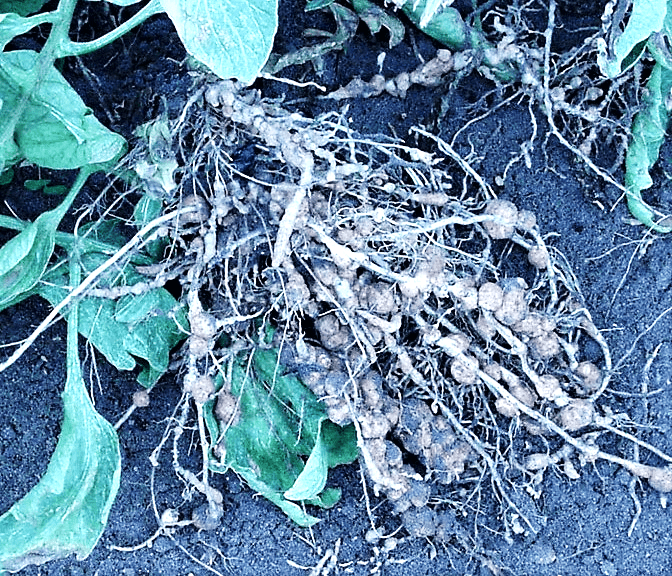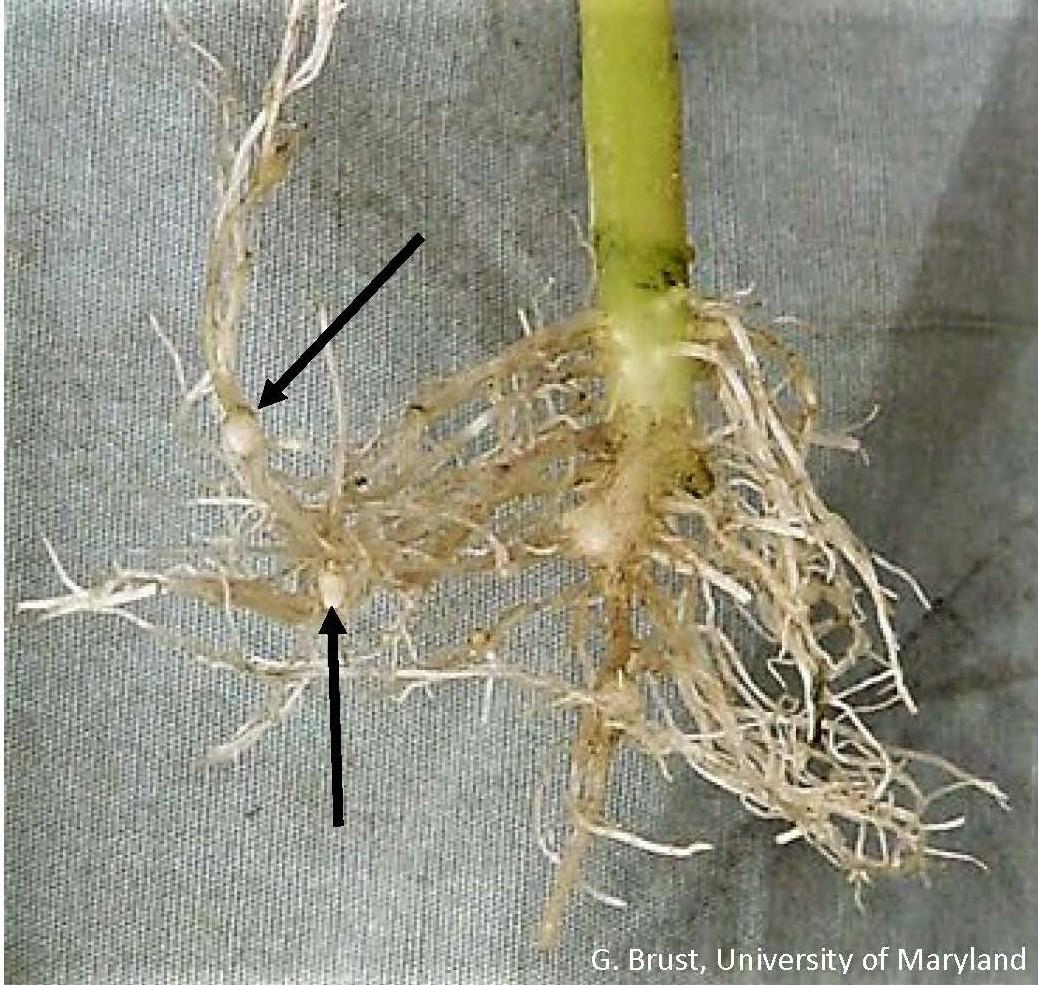Good Time to Check for Root Knot Nematode in Vegetables
As this growing season winds down and for the next few weeks it is a good time to examine vegetable roots for root knot nematode (RKN). I would be suspicious of having RKN if my vegetables seemed to need more water than normal or wilted during the heat of the day and recovered later or plants had nutrient deficiency symptoms rarely seen in your fields and the addition of fertilizers did not seem to alleviate the deficiency symptoms. Other symptoms to be suspicious of include plants in some areas appearing stunted with either lower yields or poorer fruit quality. If these vegetable problems were noticed in spots in the field that seemed to follow down a row year after year, there is a chance you have RKN and you should check your vegetable roots for galls.


